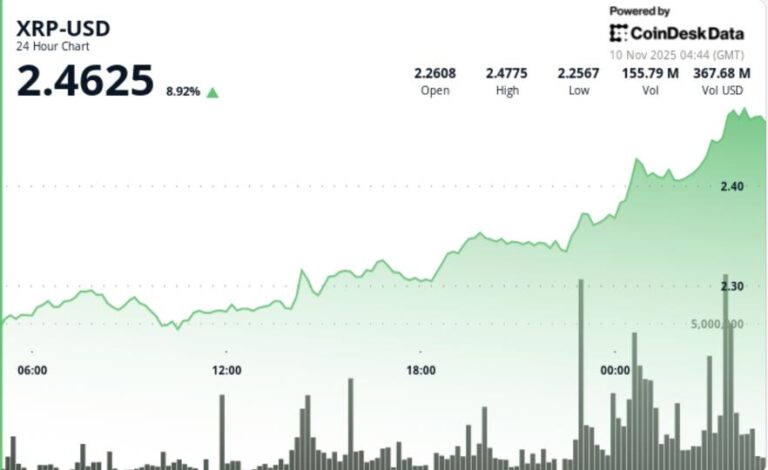XRP vs. Bitcoin: A Comparative Study
Introduction
In the world of cryptocurrencies, Bitcoin (BTC) and XRP are two prominent players that have captured the attention of investors, technologists, and financial institutions alike. While both serve as digital assets, they have fundamentally different purposes, technology, and market dynamics. This article aims to explore the key differences and similarities between XRP and Bitcoin, providing insights into their respective roles in the cryptocurrency landscape.
Underlying Technology
Bitcoin operates on a decentralized, peer-to-peer network that utilizes blockchain technology to enable secure and transparent transactions. Its proof-of-work consensus mechanism requires significant computational power, which has raised concerns about energy consumption and scalability. In contrast, XRP uses a consensus protocol that allows transactions to be settled within seconds, making it more efficient for cross-border payments. The XRP Ledger, which underpins XRP, is designed to handle a high volume of transactions without the need for mining, resulting in lower energy consumption and faster processing times.
Purpose and Use Cases
Bitcoin was created as a decentralized digital currency intended to serve as an alternative to traditional fiat currencies. Its primary use case revolves around being a store of value and a medium of exchange. Over the years, Bitcoin has gained recognition as “digital gold,” attracting investors seeking a hedge against inflation and a means of wealth preservation.
On the other hand, XRP was developed primarily for facilitating international money transfers and remittances. Its primary use case is to act as a bridge currency for financial institutions, enabling them to conduct cross-border transactions more efficiently and cost-effectively. Ripple, the company behind XRP, aims to improve the existing financial infrastructure by providing solutions that integrate with traditional banking systems.
Market Performance and Adoption
Bitcoin, as the first cryptocurrency ever created, has a significant head start in market capitalization, adoption, and brand recognition. It consistently dominates the cryptocurrency market and has established a large community of users and investors. Its price is often viewed as a barometer for the entire crypto market, and it has undergone significant price volatility since its inception.
XRP, while not as widely recognized as Bitcoin, has seen substantial growth, especially in the context of partnerships with financial institutions and payment providers. Ripple’s collaborations with banks and payment services enhance the adoption of XRP for cross-border transactions. However, XRP’s price has been subject to regulatory scrutiny, especially following the U.S. Securities and Exchange Commission’s (SEC) lawsuit against Ripple, which has impacted its market performance.
Regulatory Environment
The regulatory landscape for cryptocurrencies varies significantly between Bitcoin and XRP. Bitcoin has generally been treated as a commodity in many jurisdictions, leading to a more favorable regulatory environment. This has allowed Bitcoin to flourish as a decentralized digital asset with minimal interference from government entities.
In contrast, XRP has faced legal challenges that have created uncertainty surrounding its classification. The SEC’s lawsuit claimed that XRP should be classified as a security, which has led to debates about its regulatory status. The outcome of this legal battle could have far-reaching implications for XRP’s future and the broader cryptocurrency market, as it may set a precedent for how other cryptocurrencies are regulated.
Community and Development
The Bitcoin community is largely driven by a decentralized network of developers, miners, and users who contribute to its ongoing development and security. Bitcoin’s open-source nature fosters an environment where anyone can participate in its evolution, although major decisions often require consensus among stakeholders.
In contrast, XRP’s development is largely guided by Ripple, the company behind it. While Ripple encourages community involvement, the centralized nature of its governance has raised concerns among some crypto purists who favor decentralization. Ripple’s focus on partnerships with banks and financial institutions has led to its positioning as a bridge between traditional finance and the blockchain ecosystem.
Conclusion
In the ongoing debate of XRP vs. Bitcoin, each cryptocurrency has its strengths and weaknesses, reflecting their distinct purposes and technological foundations. Bitcoin continues to stand as the pioneer of the cryptocurrency movement, symbolizing decentralization and serving as a store of value. XRP, on the other hand, aims to revolutionize global payments and enhance the efficiency of financial transactions.
As the cryptocurrency market continues to evolve, the future of both Bitcoin and XRP will depend on various factors, including regulatory developments, technological advancements, and market dynamics. Investors and enthusiasts must remain informed and adaptable to navigate this rapidly changing landscape, recognizing that both assets could play significant roles in shaping the future of finance.
